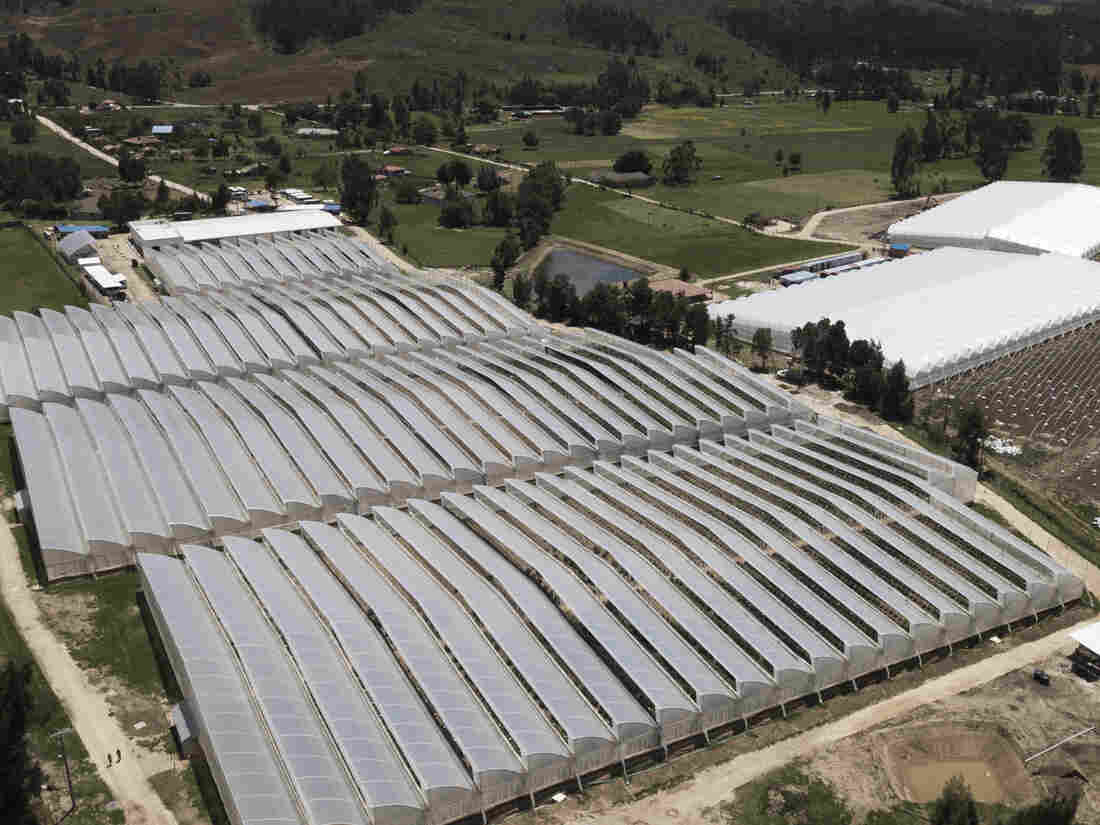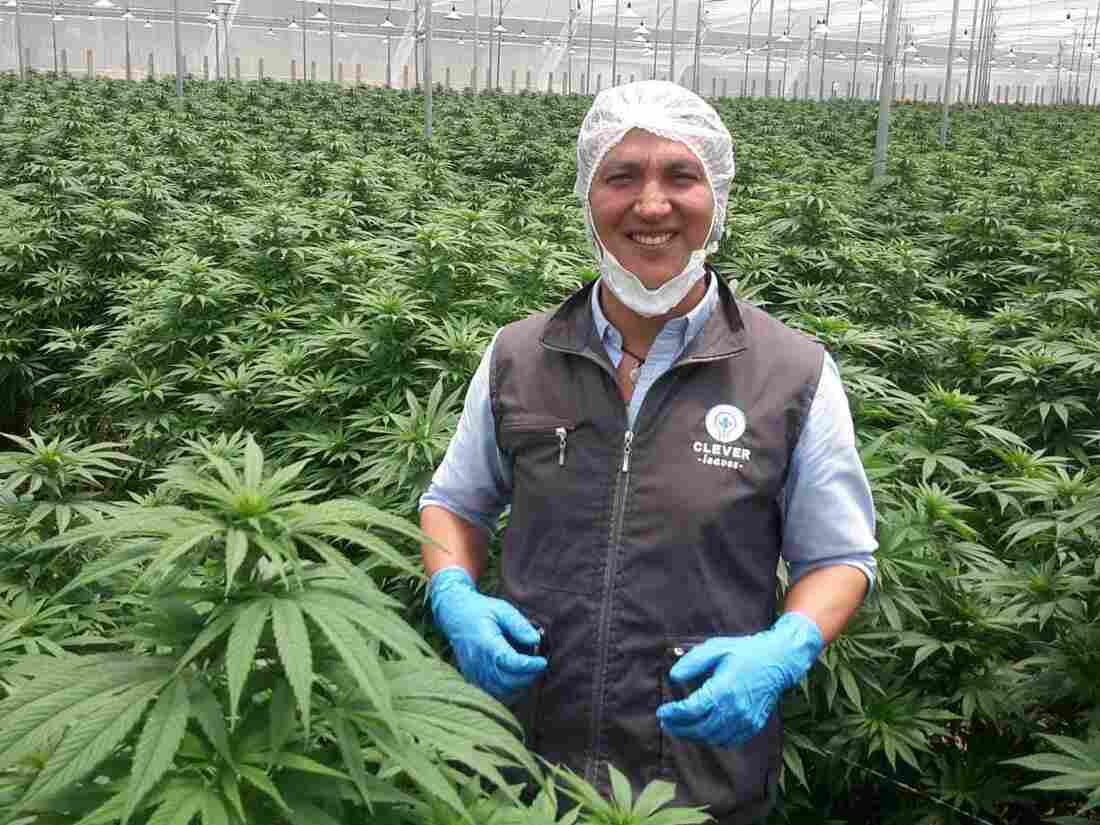Bianca Andreescu Snatches Historic Victory From Serena Williams, Wins 1st Grand Slam

Bianca Andreescu reacts after defeating Serena Williams in the women’s singles final of the U.S. Open.
Adam Hunger/AP
hide caption
toggle caption
Adam Hunger/AP
Updated at 9:35 p.m. ET
Canadian Bianca Andreescu beat Serena Williams (6-3, 7-5) at the U.S. Open on Saturday, becoming the first Canadian to win a Grand Slam singles title.
Her victory at Arthur Ashe Stadium — the site of Williams’ first Grand Slam win in 1999 — kept Williams from tying Australia’s Margaret Court’s all-time record of 24 Grand Slam titles.
Andreescu returned a weak serve from Williams with a reliable forehand to seal the game. Then, her face in disbelief, 19-year-old Andreescu hugged Williams at the net and fell to the blue court, basking in her feat.
“Being able to play on this stage against Serena, a true legend in this sport, is amazing,” said Andreescu, after winning her first major final appearance. “Oh, man, it wasn’t easy at all.”
For Andreescu — born the year after Williams won her first major title at the U.S. Open — the victory capped an impressive run at this year’s tournament. She became the first Canadian to reach a Grand Slam finals. And despite setbacks from a shoulder injury, the Romanian Canadian’s play helped her rise to 15th in the Women’s Tennis Association rankings entering her match against Williams. She was ranked 208 last summer.
Andreescu appeared fearless in the face of her more experienced rival. Her risky coin-toss choice to receive against a master server ended up in her favor. Serena double faulted to hand Andreescu a winning first set that she’d dominated with spin serves fans are used to seeing from Williams and aggressive returns.
In the second set, Williams began to turn over her game. She closed a 1-5 down gap after a stunning rally that drew deafening roars from the crowd, prompting Andreescu to cover her ears.
Asked about her most trying moment to seal the win, Andreescu replied, “Definitely the crowd.”
“I know you wanted Serena to win — I’m sorry!”
Serena Williams scores a point against Bianca Andreescu on Saturday.
Adam Hunger/AP
hide caption
toggle caption
Adam Hunger/AP
The match represented another difficult loss for the 37-year-old Williams since her return to tennis last year after the birth of her daughter in 2017. Since her return, she has tried unsuccessfully four times to match the record for most Grand Slam wins.
“I’m just so proud that I’m out here and competing at this level. My team has been so supportive through all the ups and downs and downs and downs and downs,” Williams said. “Hopefully, we’ll have some ups soon.”
The only other match-up between Williams and Andreescu was cut short when Williams suffered a back injury in the Rogers Cup final in Toronto last month. Andreescu took home that title. Impressed by her rival’s sportsmanship after the match, Williams called Andreescu an “old soul.”
Both attribute their success to a strong mental game as much as a physical one. Andreescu has spoken about her pregame meditation ritual.
As for Williams, she says the stress of contending with other tennis superstars might be less taxing than motherhood.
“I think being on the court is almost a little bit more relaxing than hanging out with a 2-year-old that’s dragging you everywhere,” Williams told USA Today after a commanding semifinals performance against Ukraine’s Elina Svitolina on Thursday. “I think that’s kind of been a little helpful.”
Colombia Is Turning Into A Major Medical Marijuana Producer

Workers prune marijuana plants at a Clever Leaves greenhouse in Pesca, Colombia. The company employs over 450 people.
Courtesy of Clever Leaves
hide caption
toggle caption
Courtesy of Clever Leaves
Patricia Santiago and her family were forced to flee their home near Colombia’s Caribbean coast after complaining about neighborhood dope dealers who, in turn, threatened to kill them. But in an odd twist, Santiago now works in the drug trade — at a medical marijuana facility.
At first, Santiago felt like she was breaking the law as she pruned and clipped cannabis plants on a plantation run by a Colombian firm called Clever Leaves. However, the government legalized medical marijuana in 2016 and now Clever Leaves is exporting cannabis-based products to Canada and the United Kingdom.
Rather than a symbol of the country’s dark past of narco-fueled violence, Santiago smiles and says, Colombian drugs “can now be used to treat people.”
At least that’s the bet of a growing number of entrepreneurs who are building vast marijuana plantations and state-of-the-art pharmaceutical laboratories that produce everything from cannabis-based pain relievers for cancer patients to dog treats that act as calming agents.
Other countries are passing laws to permit the production, import and export of medical marijuana but Colombia has a leg up because it did so three years ago, says Rodrigo Arcila, president of the Colombian Cannabis Industry Association. He said the group’s 29 member companies have invested more than $600 million in building medical marijuana facilities.
Arcila maintains that Colombia can produce cannabis products at lower prices than competitors due to affordable land, relatively low wages and an abundance of skilled farm hands who cut their teeth in Colombia’s booming flower business.
Colombia sits near the equator, giving it 12 hours of daily sunlight year-round. By contrast, countries with seasonal variations require the extensive use of artificial lights, which drives up production costs.
“This is a marvelous opportunity in a country where drugs have caused so many problems,” Arcila says.
Colombia is already well-known as a major marijuana supplier. In the 1960s and 1970s, tons of illegal Colombian cannabis, mostly grown in the Sierra Nevada mountains near the Caribbean coast, were smuggled into the United States.
But marijuana traffickers, including the late drug lord Pablo Escobar, soon switched to cocaine, which was far more profitable. That made Colombia ground zero for the war on drugs, a conflict that in the 1980s and ’90s killed thousands of Colombians, police and army soldiers, anti-drug agents, judges and politicians.
In recent years Colombia — like Canada, several European and Latin American nations and many U.S. states — has taken a more permissive stance on pot. Since the mid-1990s, Colombian courts have upheld the right of individuals to possess up to 20 grams of marijuana, though a government decree last year banned people from using drugs in public.
An aerial view of the Clever Leaves plantation in Pesca. It currently covers 37 acres and plans to expand cultivation to over 200 acres of marijuana plants by 2021.
Courtesy of Clever Leaves
hide caption
toggle caption
Courtesy of Clever Leaves
As an emerging venture it’s unclear how the medical marijuana business will play out. For example, it remains illegal to import marijuana-based products into the United States. Due to government bureaucracy in Colombia, it can take months or years for startups to secure the proper permits and licenses.
Yet the uncertainty hasn’t stopped companies from betting big on cannabis. Khiron, a Canadian firm founded in 2017 and based in Colombia’s capital of Bogotá, now has marijuana plantations in this country as well as Chile and Uruguay. CEO Álvaro Torres, a 40-year-old Colombian engineer, says one reason he got involved in the business was the occurrence of so many high-profile deaths, including the music star Prince, from opioid-based drugs.
“So I look at that and say: ‘Why not cannabis which has less hazardous effects for the body?” Torres says.
Julián Wilches is the co-founder of Clever Leaves. Before getting into medical marijuana, he used to work on drug policy at Colombia’s Justice Ministry.
John Otis for NPR
hide caption
toggle caption
John Otis for NPR
Julián Wilches, who co-founded Clever Leaves in 2016, used to work for the Colombian Justice Ministry combating the illegal narcotics industry. But he has fully embraced medical cannabis.
“I feel great about doing this,” Wilches says during a tour of the Clever Leaves facility in the town of Pesca, a four-hour drive from Bogotá. “This is the right way to use controlled substances.”
The land around Pesca has long been used for potato and dairy farming, but it’s now home to 37 acres of marijuana bushes. Clever Leaves intends to increase the acreage to more than 200 by 2021, in its quest to become the world’s largest medical marijuana company.
Inside green houses, Clever Leaves workers wearing smocks and rubber gloves water, prune and clip the cannabis plants which grow to a height of about five feet before they are harvested. The flowers, which are rich in chemical compounds called cannabinoids, are then dried and ground into a powder that is turned into oils, extracts and crystals at a Clever Leaves laboratory.
“Pharmaceuticals always come from the global north to South America to Africa to Asia,” Wilches says “This is something that is changing that model. This is from Colombia to the world.”



